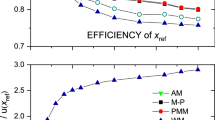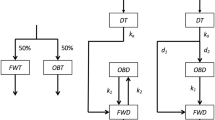Abstract
Tritium and14C are often considered relatively safe radionuclides to handle because their permissible body-burdens are orders of magnitude greater than those for most radionuclides. This is reflected in the U.S. Atomic Energy Commission regulations that do not require a license for the use of amounts up to 1000 μCi of3H and 100 μCi of14C. Although many tracer studies are performed with much smaller quantities, poor control of even these small amounts can result in contamination, causing an internal radiation hazard or the loss of valuable experimental data. This paper discusses the methods of handling radioactive materials that minimize the risks of contamination, and it emphasizes the needs for proper storage, secondary containers, monitoring air and surfaces, and analysis of bioassay samples for measuring body burdens. The user's responsibilities for licensing, waste disposal and transportation are also included. The authors' experience at a laboratory handling both tracer and curie amounts of14C and3H required for labeling and synthesizing compounds and methods of accident prevention and decontamination are described.
Similar content being viewed by others
References
International Commission on Radiological Protection, “Report of Committee II on Permissible Dose for Internal Radiation (1959),” Pergamon Press, New York, 1960 (ICRP Publication 2.)
Code of Federal Regulations, Title 10—Atomic Energy, Part 20—Standards for Protection Against Radiation (May 8, 1970).
National Council on Radiation Protection and Measurements, “Basic Radiation Protection Criteria,” NCRP Publications, Washington, 1971. (NCRP Report 39).
International Commission on Radiological Protection, “Recommendations of the International Commission on Radiological Protection (Adopted September 17, 1965),” Pergamon Press, New York, 1966.
Safe Handling of Radioisotopes, International Atomic Energy Agency, Vienna, 1958. (International Atomic Energy Safety Series No. 1.)
American Standard Design Guide for a Radioisotope Laboratory (Type B), ASA N5.2-1963, American Standards Association Inc., New York, 1963.
Ward, D.R., “Design of Laboratories for Safe Use of Radioisotopes,” USAEC Report AECU-2226, USAEC Office of Technical Information Extension, Oak Ridge, Tenn., 1952.
“Industrial Ventilation, A Manual on Recommended Practice,” Ninth Edition, American Conference of Governmental Industrial Hygienists Committee on Industrial Ventilation, Lansing, Mich., 1967.
Supplier's Errors Beset Radiochemical Users, Chem. Eng. News 49 (18):24 (1971).
Cliggett, P.A., and J.M. Brown, Jr., J. Nuc. Med. 9:236 (1968).
Osborne, R.V., “Studies and Techniques in Tritium Health Physics at CRNL,” Atomic Energy of Canada Ltd., Report AECL-2699, November 1967.
“Los Alamos Handbook of Radiation Monitoring,” Edited by J.W. Healy, USAEC Report LA-4400, Los Alamos Scientific Laboratory, Los Alamos, N.M., 1970.
Snyder, W.S., B.R. Fish, S.R. Bernard, M.R. Ford and J.R. Muir, Phys. Med. Biol. 13:547 (1968).
Sanders, S.M., Jr., and W.C. Reinig, Proceedings of a Symposium, Richland, Washington, 1967, Excerpta Medica Foundation, 1968, p. 534.
Bray, G.A., in “The Current Status of Liquid Scintillation Counting,” Edited by E.D. Bransome, Jr., Grune & Stratton, New York, 1970, p. 170.
Raaen, V.F., G.A. Ropp and H.P. Raaen, “Carbon-14,” McGraw-Hill, New York, 1968, p. 117.
Author information
Authors and Affiliations
Additional information
Under contract with the U.S. Atomic Energy Commission.
About this article
Cite this article
Berger, J.D., Cloutier, R.J. Health physics practices in laboratories using3H- and14C-labeled tracers. Lipids 7, 604–610 (1972). https://doi.org/10.1007/BF02531963
Received:
Issue Date:
DOI: https://doi.org/10.1007/BF02531963




